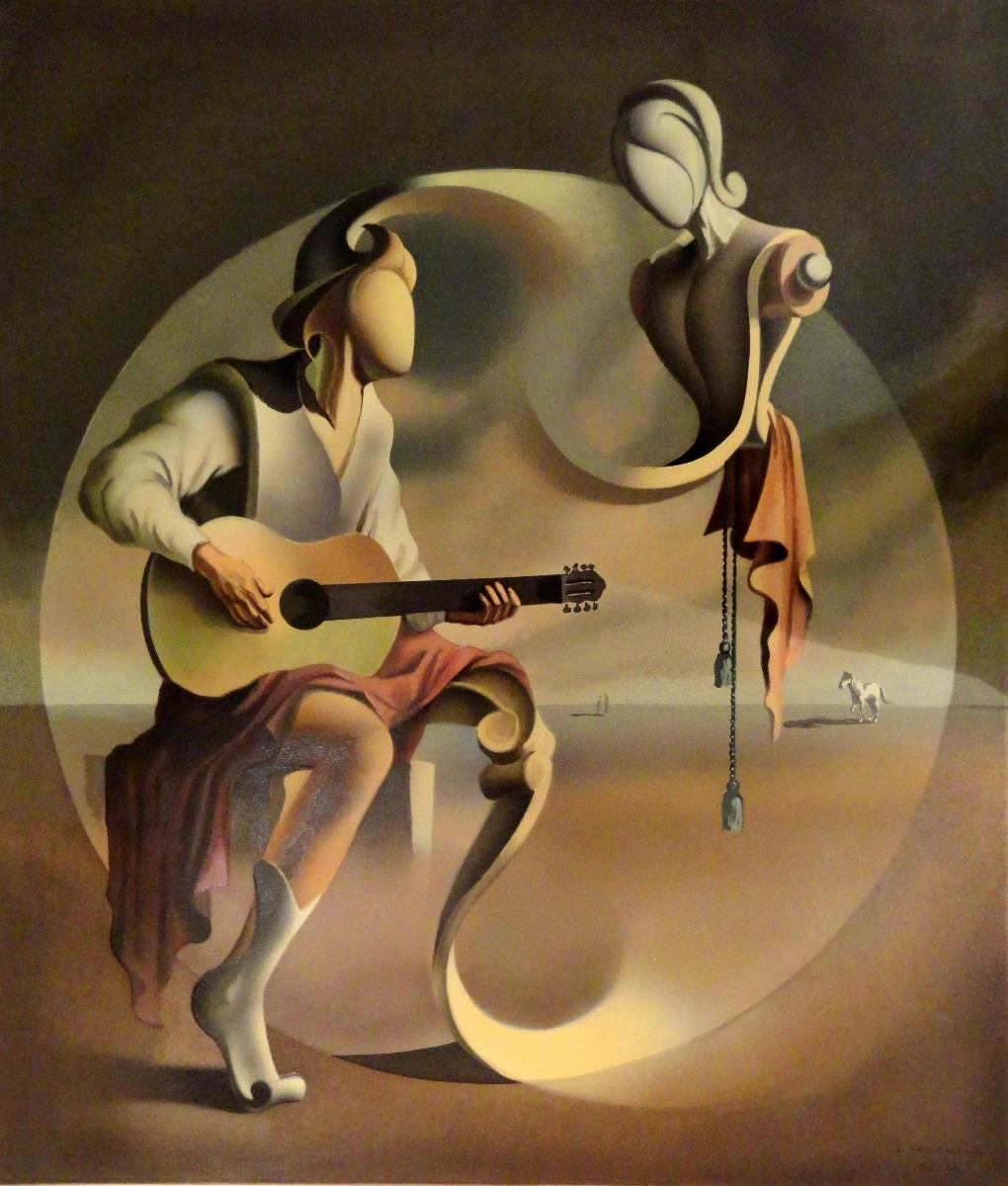A Swiss painter Luigi Rossi (
1853-1923) was born in Cassarate, Lugano. Having studied at the Brera Academy of Fine Arts under the guidance of Giuseppe Bertini, Rossi made his artistic debut in 1871, inaugurating a repertoire of
Genre scenes🎨 with a subtle vein of social criticism that was to be a distinctive feature of his work.
His Swiss origin prevented him from receiving the prestigious Prince Umberto Prize, reserved for citizens of the Kingdom of Italy, in 1878. His repertoire then broadened during the 1880s to include mountain landscapes painted
en plein air🎨, scenes of peasant life and portraits.
The period from 1885-1888 was spent in Paris, where he also worked a great deal as an illustrator for Alphonse Daudet and Pierre Loti in particular.
Having returned to Milan, he came into contact with the poet Gian Pietro Lucini, a meeting that marks a turning point also in his work as a painter.
This led to some of his most celebrated canvases, which are still solidly realistic but informed by the new Symbolist approach.
A regular participant in the major Italian and international events with paintings and watercolours, he held a solo show at the Galleria Pesaro, Milan, in 1921.
He died in Biolda, Lugano. His death was commemorated with two posthumous shows, one at the Società per le Belle Arti ed Esposizione Permanente in Milan and the other at Villa Ciani, Lugano, in 1924.
Luigi Rossi (1853-1923) è stato un'artista di respiro europeo operante fra realtà e simbolo, colto e spontaneo fautore di un'arte sincera. Ha dipinto con sobrietà e misura scene di genere e di vita contadina, ritratti e paesaggi. L'artista è stato illustratore di libri a Parigi e ha svolto un'attività di educatore democratico a Milano. Luigi Rossi nell'ultimo periodo dipinge frequenti motivi della regione amata della Capriasca.
Luigi Rossi nasce nel 1853 a Lugano. Tre anni dopo la famiglia si trasferisce a Milano, dove Luigi verrà iscritto all’Accademia di Brera.
La sua formazione avviene sotto la guida di Giuseppe Bertini, accanto a Bazzaro, Gignous, Tallone, e conosce una parentesi piemontese che gli consente di entrare in contatto con Calderini e Bistolfi.
Nel ’71 l’esordio: Questua infruttuosa e altre opere degli anni immediatamente seguenti, iscritte al filone della cosiddetta pittura di genere, di derivazione induniana, gli valgono il consenso del pubblico e della critica.
Nel ’78, con Ritorno al paese natio, il giovane artista sfiora il riconoscimento del premio Principe Umberto che gli sfugge in quanto non "regnicolo".
All’81 risale la cordiale pagina
Verista🎨 dedicata alla sua città di adozione: Una via di Milano. Dai soggiorni nelle valli ticinesi trae invece lo spunto per alcuni dipinti legati al paesaggio o alla raffigurazione della vita contadina; all’altezza dei primi anni ottanta, Rossi esegue a Milano alcuni dei suoi migliori ritratti, intensi e psicologicamente profondi, d’impronta scapigliata.
Dall’85, per tre anni, l’artista è a Parigi, dove lavora come illustratore molto apprezzato in particolare da Daudet e Loti: del primo illustra il ciclo di Tartarino e Sapho, del secondo Madame Chrysanthème; con l’amico Conconi nel ’92 pone mano all’illustrazione delle pastorali Daphnis et Chloé di Longo sofista.
Di ritorno a Milano riprende la consuetudine con la pittura e riallaccia i contatti con l’ambiente artistico della città.
A partire dagli anni novanta si inaugura la stagione migliore della sua pittura entro la quale l’esperienza verista si muta in simbolo: agisce in questo senso l’influsso dell’amico scrittore Gian Pietro Lucini autore di alcune liriche riferite a dipinti di Rossi (Scuola del dolore, Rêves de Jeunesse, Il mosto) in cui si fondono componenti realiste e simboliste.
La sua presenza a rassegne italiane e svizzere è regolare e stimata, al pari della sua partecipazione alle commissioni artistiche dei due paesi.
Ai primi del novecento si apre una misurata parentesi di gusto liberty, mentre prosegue la passione per la pittura di paesaggio, nutrita dall’amore per la regione ticinese della Capriasca, dove nel ’13 acquista la casa di Biolda, il cui giardino sarà teatro di una serie di ritratti all’aperto della figlia Gina.
Dopo l’attiva partecipazione al gruppo degli Acquarellisti lombardi, svolta accanto a Carcano, Gola, Sala e Weiss, e all’attività delle scuole laboratorio dell’Umanitaria, Luigi Rossi tiene una personale nella prestigiosa galleria di Lino Pesaro a Milano nel ’21: l’ampia mostra è di taglio antologico e riunisce le opere dell’esordio, i ritratti, scene di Sicilia e dell’Atlantico, opere a sfondo sociale o allegorico e i paesaggi di diversa epoca.
Dopo la sua morte, avvenuta nel ’23 in Biolda, Luigi Rossi è stato ricordato in due mostre postume alla Permanente di Milano e a Villa Ciani di Lugano, allestite nel ’24. Nel ’79 soltanto, la pubblicazione della prima monografia (Bramante Editrice) segna la ripresa di interesse per l’artista, confermata dall’esposizione di Lugano (1980) e da quelle di Milano-Bellinzona-Losanna (1985-’86).
Al ’99 risale la stampa del catalogo ragionato (Cornèr Banca e Federico Motta) cui fa seguito l’edizione dell’atlante della casa museo Luigi Rossi, in Capriasca nel 2009.











.jpg)
.jpg)
.jpg)
.jpg)










































.jpg)
.jpg)
.jpg)
.jpg)
.jpg)
.jpg)
.jpg)
.jpg)
.jpg)
.jpg)
.jpg)
.jpg)
.jpg)
.jpg)
.jpg)
.jpg)
.jpg)
.jpg)
.jpg)
.jpg)
.jpg)
.jpg)
.jpg)